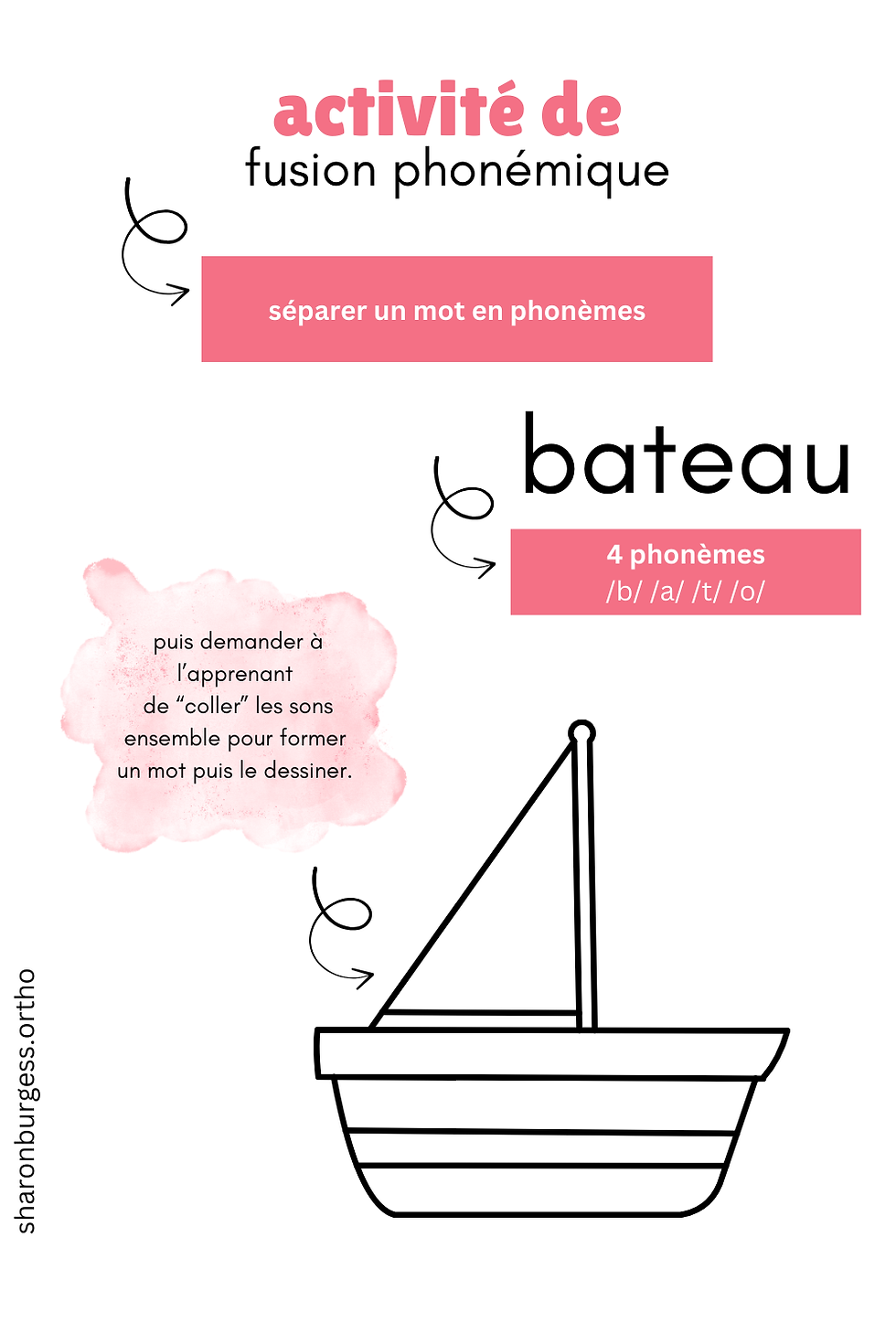French Science of Reading: Teaching the French -eau Sound
- Sharon Burgess
- Jul 6
- 3 min read
Updated: Aug 27
If you’ve been exploring the Science of Reading, you know how essential it is to understand the way different graphemes represent different sounds in order to teach them effectively.
Here are five key facts about the French -eau grapheme (sound) that will help you teach it efficiently:
One Sound, Three Letters
In French, the grapheme -eau consists of three letters "e+a+u" but represents only one phoneme - /o/. If you’re familiar with the French Science of Reading, you know that this is not considered a son composé. Instead, it’s classified as a graphème complexe, more precisely a trigramme. What makes it especially helpful for teaching is its consistency: -eau always represents the "o" sound.
Found at the End in High-Frequency Bisyllabic Words
Many frequent early reading words follow a CV.CV + EAU pattern. Think of words like cadeau, bateau, chapeau, manteau, and pinceau. These bisyllabic words are common in French vocabulary lists and ideal for teaching pattern-based decoding.
Consistent Phonics
The pronunciation of -eau never changes. This is a huge advantage for beginner readers learning spelling-to-sound rules.
Spelling Transparency in an Opaque Language
French spelling can be tricky. However, -eau offers a clear and transparent spelling-sound correspondence. This helps students grasp phoneme-grapheme conversion effectively.
French vs. English
The phonological structure differs between the two languages. French vocabulary predominantly features bisyllabic CV.CV words ending in vowel sounds like -eau (e.g., cadeau, drapeau). In contrast, English vocabulary often contains monosyllabic CVC words (e.g., cat, dog, sit, mop).
The -eau sound might seem tricky at first. However, once you understand how it fits into those bisyllabic patterns, teaching it becomes much easier. The key is using evidence-based strategies grounded in the science of reading. This involves breaking things down, practicing systematically, and helping students learn how to sound out words and blend sounds. When we teach with evidence-based strategies, it makes it easier for learners to learn!
Phonemic Awareness is the Key to Success in Teaching Decoding and Encoding
Here are some simple activities to work on phonemic awareness that I use in my speech therapy sessions:
Use the -eau word list below and break down a word into its individual sounds. Have your learner blend the sounds together to come up with the word "bateau," and then draw a picture of it.

Choose a word from the list, say it out loud (for example, "cadeau"), and have your learner break it into individual sounds: "k-a-d-o." Use mini objects such as blocks, cubes, or macaroni to help represent each sound of the word. Even better, have pictures, toys, or images that represent each word. Make sure to write it out and draw attention to each phoneme/grapheme!
Click here to download a list of words that you can use to teach phonemic awareness, decoding (reading), and encoding (spelling).
Click here for resources to teach phonemic awareness skills, decoding (reading), and encoding (spelling) of the French -eau sound.
Conclusion: Mastering the -eau Sound
Understanding the -eau sound is crucial for anyone teaching French. By focusing on its consistent phonetic rules and engaging students with interactive activities, you can make learning enjoyable and effective. This approach not only helps in mastering the sound but also builds a solid foundation for further language learning.
Bon enseignement!
Sharon 💖⭐️🤓



Comments